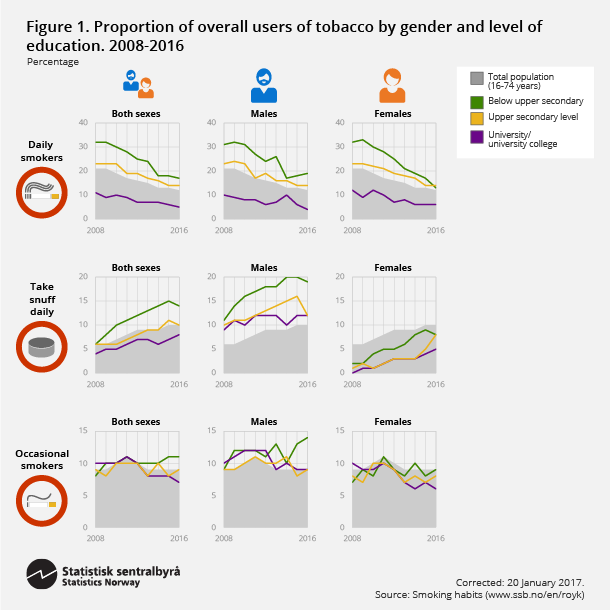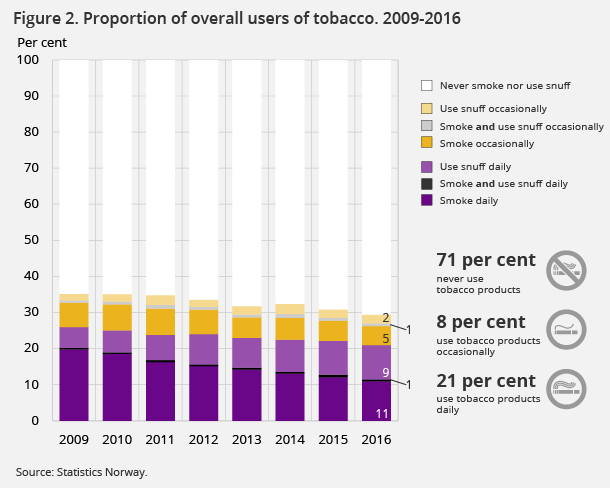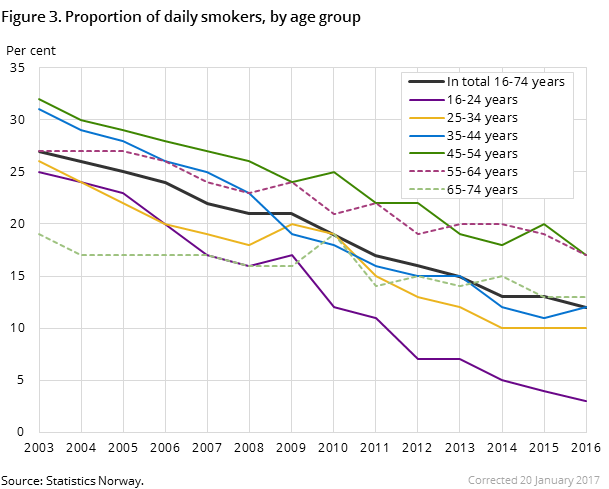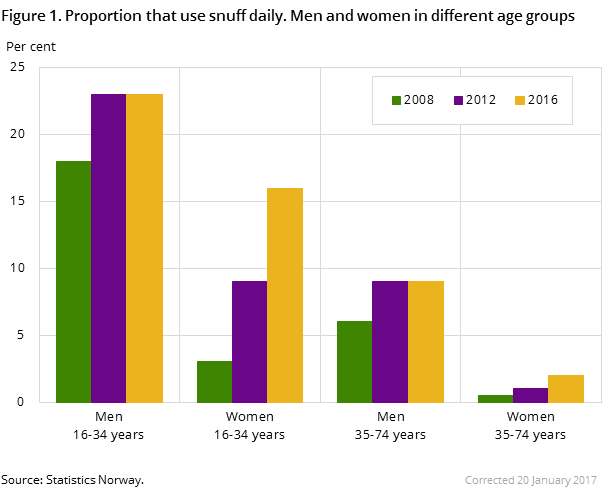Fewer people smoke, but more women use snuff
Published:
There are fewer people smoking daily today compared to 10 years ago, but the use of snuff has increased in recent years – particularly among younger women. One out of six women aged 16-34 years used snuff daily in 2016, and use among young women is almost as extensive as among men of the same age.
- Full set of figures
- Tobacco, alcohol and other drugs
- Series archive
- Tobacco, alcohol and other drugs (archive)
The proportion of daily smokers has remained stable in recent years. In the same period, use of snuff increased, but more people still smoke daily than use snuff. There are fewer daily smokers and fewer who smoke occasionally among both men and women. In 2001, one out of three smoked daily, today one out of ten smoke daily, and this applies to both men and women. The proportion of occasional smokers has remained stable at around 10 per cent since 1998.
Daily use of snuff has increased steadily since 2008. There is little change in how many use snuff occasionally. Use of snuff has primarily increased among women. Although women use more snuff than before, it is still men who use it the most.
The older smoke, the younger use snuff
Fewer people smoke now in most age groups, but the trend differs somewhat between people above and below 44 years. The decline is greatest among young people aged 16-24, where only 3 per cent smoke daily, while the corresponding figure for people aged 45 and older is 20 per cent.
The use of snuff daily is increasing in all age groups, and the youngest (16-34 years) age group is increasing the most. Use among women is increasing the most, especially among the younger ones. The men's consumption is fairly stable.
Social differences
People’s use of tobacco varies with level of education, and people with a higher education smoke the least. The largest decrease is among people with education at a primary/lower secondary level. One out of three in this group smoked in 2006, but only one out of six in 2016. There was little disparity between educational groups for the use of snuff in 2008, but this has changed over time. Today we see clear disparities, and in the same way as for smoking, those with the lowest education use the most snuff.
Men with a higher education smoke the least, and the proportion of daily smokers in this group fell from 13 per cent in 2006 to four per cent in 2016. Only six per cent of women with a higher education smoke daily, but women with a primary/lower secondary level of education have had the greatest reduction. In 2006, 34 per cent in this group smoked, and by 2016 this had dropped to just 13 per cent.
Use of snuff increased most among people with a higher education. Women’s use of snuff increases in all educational groups.
One out of three use snuff when they stop smoking
Of those who have stopped smoking daily, one out of three said they used snuff. This is an increase of 13 percentage points from 2006. Of those who used snuff to stop daily smoking, three out of four still use snuff daily or occasionally.
Contact
-
Maria Høstmark
-
Arne Jensen
-
Berit Otnes
-
Statistics Norway's Information Centre




